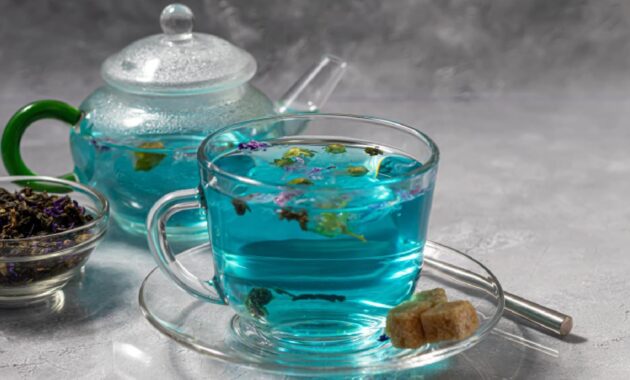As the name implies, blue tea is a beverage with a strong blue hue. Blue tea has become a popular herbal tea trend in recent years, because of its numerous health benefits it provides. It is known for improving heart and brain health as well as having anti-diabetic and anti-cancer effects. Let us tell you more about health benefits of blue tea.
What is blue tea?
Blue tea, also known as butterfly pea flower tea, hails from South Asia. The tea is made by brewing the bright blue petals of the Clitoria ternatea L. plant which is also used as a natural food dye. Other common names are cordofan pea and Asian pigeonwings.

What are the benefits of drinking blue tea?
Blue tea is high in antioxidants, particularly anthocyanins. Antioxidants aid in the body’s defense against free radicals and oxidative stress, both of which can hasten the ageing process and cause chronic illnesses, says nutritionist Chhavi Rohilla.
- Butterfly pea flower tea contains compounds that may have anti-inflammatory qualities. This may help to lower inflammation in the body, which is linked to a number of health problems.
- In Ayurveda, blue tea is thought to have cooling qualities. It is good for people with a “Pitta” constitution or those with heat-related or inflammatory illnesses, as it is frequently taken to help chill the body and balance excess heat.
- It is also used due to its possible anti-ageing benefits on the skin and general vitality.
- Blue tea is well-known for its relaxing and stress-relieving effects. Its possible interaction with brain chemicals may help to lower anxiety and increase calm.
- Blue tea’s flavonoids enhance and preserve the suppleness of the skin. One cup of blue pea tea each day can assist in flushing the body of undigested food particles, brightening dull complexion and eradicating dark spots.
- The blue pea flower has a substance called anthocyanin, which is well known for promoting blood circulation in the head and supporting good scalp function.
How to make blue tea?
Making a cup of blue tea only requires a few simple ingredients. Simply bring some dried lemongrass and blue pea flower petals to a boil in water for 5 to 10 minutes. Before meals, mix this herbal mixture with some honey and serve it warm. You can also drink cold blue tea after eating to help with digestion and encourage sound sleep.

How to incorporate blue tea into your daily routine?
Blue tea, being caffeine-free, offers a delightful way to kickstart your day. It’s a soothing and colourful alternative to traditional morning beverages like coffee or regular tea. Whether you prefer it hot to warm up your mornings or as a chilled iced tea for a refreshing feel, blue tea can be enjoyed in various ways.
What are the side effects of consuming blue tea?
Blue tea is generally safe to consume, although it may lead to digestive discomfort if consumed in high amounts, says Rohilla. However, more research is needed to validate its effects.
Blue tea has various health benefits, and its adaptable qualities make it a fantastic supplement to your regular diet.
Select Topics of your interest and let us customize your feed.
PERSONALISE NOW
#Blue #Tea #Benefits #Side #Effects
